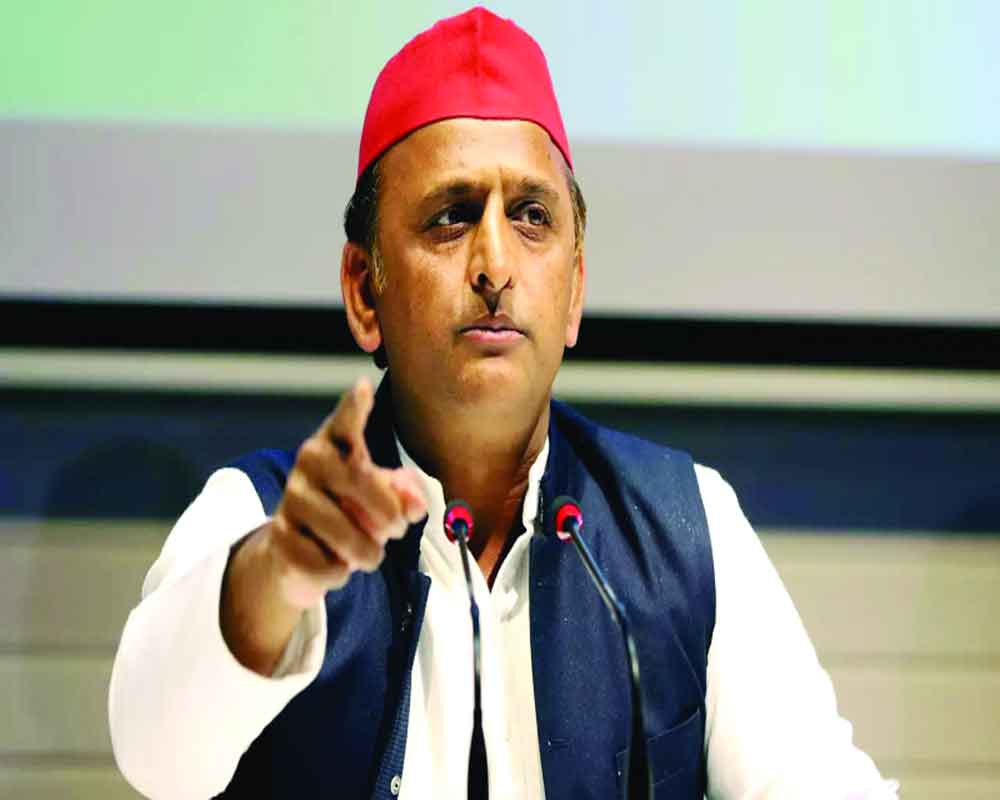The BJP’s rivals hunt in packs but are still unable to throw up a strong challenge in terms of candidates
The political landscape of Uttar Pradesh, which sends the highest number of MPs to the Lok Sabha, is undergoing an intense upheaval in the run-up to the general elections, which has taken the centre stage as usual. What is depressing, though comical at the same time, is the frenetic activity in the Samajwadi Party and the inertia in the Congress regarding the naming of their poll nominees –— but both to the same end. While the SP substitutes its candidates by the hour, the Congress is fighting shy of naming its fighters even in traditional strongholds such as Amethi and Rae Bareli. The Akhilesh Yadav-led SP is making headlines with its unconventional strategy of repeatedly changing candidates on the seats allotted to it by the Opposition INDIA bloc, reflecting perhaps a calculated move to optimise electoral prospects. On the one hand, this swift candidate shuffle underscores the party’s agility and adaptability in responding to local dynamics; on the other, it is being seen as a sign of indecision. Prime Minister Modi was quick to take a jibe at the SP over its last-minute distribution of tickets. Akhilesh must be knowing the importance of Uttar Pradesh in deciding the fate of the nation as well as his own party. In 2019, the NDA had emerged as the leading coalition with a notable vote share of 51.19 per cent. The BJP garnered 49.98 per cent of the votes on its own and won 62 seats. With NDA ally Apna Dal (Sonelal)’s two seats, the tally was an impressive 64 seats. Mayawati’s BSP won 10 seats and the SP, with 17.96 per cent vote share, won five, with one seat going to the Congress.
This time round, the pressure is on the BJP to maintain its last performance. The SP now has a tie-up with Congress, but the BSP — going it alone — is likely to dent their vote share. The SP’s candidate selection process reflects a nuanced understanding of caste equations, regional sentiments and grassroots dynamics, factors that often play a decisive role in UP’s electoral outcome. However, amidst the SP’s dynamic manoeuvres, the Congress finds itself struggling to even find suitable candidates. Modi’s recent remarks on the Congress’ electoral predicament highlight the party’s organisational deficiencies and its failure to mount a formidable challenge in the key State. The absence of a coherent strategy, coupled with internal dissent and leadership crises, has exacerbated the grand old party’s electoral woes. The contrasting trajectories of the SP and the Congress underscore the complexity of Uttar Pradesh’s electoral dynamics and the divergent strategies adopted by the Opposition parties to counter the BJP’s dominance. While the SP emphasises agility, coalition-building and grassroots mobilisation, the Congress grapples with internal strife, organisational weaknesses and a lack of viable candidates. The battle for UP’s 80 seats is not a contest merely between these political groups but a reflection of the larger socio-political fault lines, caste dynamics and economic aspirations that define the State’s complex fabric.


























